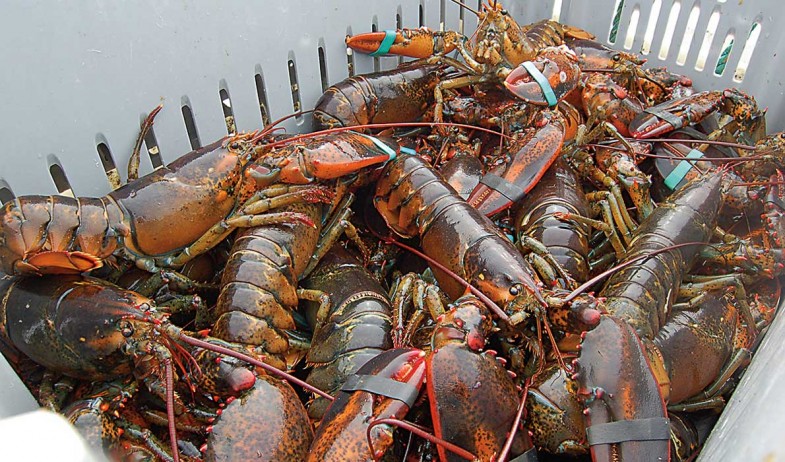
About 20 years ago, a family friend from California told me while she was visiting northern Michigan that she didn't bother to eat seafood in the Midwest, because being able to enjoy the freshness and taste of seafood in her home state—a state that sits on the ocean—meant her palate didn't appreciate the lesser quality that us land-locked citizens were forced to accept. At the time, I thought her comment was rude and pretentious, but then I started thinking about the fresh food I had access to.
My family leased our land to produce farmers, and most of our property was in apple orchards and sweet corn. Growing up, I never understood why the Red Delicious apple got such a bad rap. In late September or early October, as the later apples came into season, we would go out into the orchard and pick one perfect specimen a piece. It was so full of flavor with a crisp, firm texture and a little bit of juice that would trickle down our faces.
As I began traveling around the country and eating apples from other places, I realized that an apple straight from a tree in my backyard was unique for many reasons. Because of the climate, geography, soils, and other inputs, there is no way to replicate the taste of those freshly picked apples or the nostalgia of youth and my memories of laying in the orchard as the days grew shorter and that yellow haze of fall embraced us. However, when we moved to Cincinnati, I noticed that the grocery stores during the autumn months would source their apples from the processors in my hometown. While they still weren't the same as an apple fresh from the tree, they were there, hinting of autumns long past.
When my friends and family from the Midwest learn that I moved to Maine, they get that light in their eye and jealously ask about the amount of lobster I consume and if there is a difference in fresh lobster compared to what we get in the middle of the country. The answers are "A LOT" and "slightly."
As those in the apple supply chain would likely tell you, getting an apple to retain its texture and taste through harvesting, processing, storing, transporting, and selling is difficult. The same goes for getting a live lobster from the Gulf of Maine to Leo’s Seafood Restaurant and Bar in Grand Rapids, Michigan, or across the world to Beijing. However, the calculations for each are quite different.
For example, I know the type of effort I put into preserving the items in my fruit basket (for eating) compared to keeping my dogs alive (not for eating). Both items are perishable and require proper handling to preserve freshness. Preservation of whole apples requires controlling the temperature, oxygen, carbon dioxide, and humidity levels. Properly done the apples go into "hibernation" until it is time to package them and send them to retailers. The other option for storing apples is processing them into other commodities like applesauce, apple juice, dried apples, apple butter, and much more. These items have a much longer shelf life and can be transported to retailers as demand requires.
Preservation of lobsters requires controlling similar parameters, including temperature, dissolved oxygen, ammonia, and pH among others. Lobsters similarly can be eaten fresh, preferably within 48 hours of being removed from the water. After a quick blanch, lobsters can also be frozen whole and stored for months. Alternatively, they can be processed into various products like split tails, pre-shucked tails, cooked or raw picked lobster meat, mince, or as ingredients in other products.
Advancements in the processing and distribution of lobster means that the lobster can travel more quickly and maintain quality better than in the past. These changes have also made it possible to send new shell lobster (a sweeter, more tender lobster due to its recently shed shell) to markets beyond Maine.
The supply chain results in value being added at each step. Harvesters require crew, fuel, bait, boat maintenance, traps, and other inputs to be able to bring the lobsters ashore. At the shore, buyers pay the captain's boat price for the catch and sell the lobsters to shippers or processors. During this stage, the lobsters go through processing to be turned into the final product and are packed. Incurred costs include sorting, cooking, picking, freezing, packing, and then shipping. From here, the lobsters go on to distributors who sell to retailers, who then in turn sell to the final customer. To highlight the inherent challenges in this process, it is worth noting that roughly 30% of the final cost of lobster represents the loss dealers and distributors face as lobsters succumb to the stress of life outside the ocean and perish.
Along the way, lobsters must be carefully and efficiently handled to preserve not only their lives, but the freshness we all expect from our seafood. This added attention adds necessary costs all along the supply chain from the Gulf of Maine to your dinner plate or top-sliced bun (depending on your preference). The steps are necessary to deliver a high-quality product to restaurants in New England, grocery stores in the Midwest, or markets in South Korea. It increases the cost of the final product, but the alternative is not pleasant.
While I highly recommend a trip to Maine to breathe in the briny ocean air, watch the lobstermen bring in their haul, and recline on the coast while listening to the waves, thanks to the many innovations in processing and distribution, it's no longer necessary to enjoy some good lobster. One can sit on the balcony of their high-rise in Chicago, boil some lobster for dinner, look out on Lake Michigan, and pretend they are on the coast of Maine enjoying one of its finest delicacies. And might I recommend some apple pie for dessert?

Contributed by